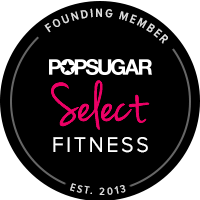Almost to the weekend (already)! I love short weeks (since my mom and I got back from NOLA on Tuesday), but with only one month left until we move, the pressure is on to finish everything in our new house, pack up and get our current house officially ready for renters. I know it will all get done (somehow), but I’m looking forward to not feeling so overwhelmed once we are moved!
Anyhow, on a more pertinent note, yesterday I was invited to participate in a twitter chat about healthy and safe swimming from the CDC (National Center for Emerging and Zoonotic Infectious Diseases), in honor of National Recreational Water Illness and Injury Prevention Week that runs from May 20-26th. Though we tend to always think about safety in and around a pool, often times we forget about our health, and how the water and other people can affect it (which I never really thought about before). With that being said, healthy and safe swimming is a great topic for today’s Thursday Tidbits. In case you missed last week’s post, you can find it here. If you are new, Thursday Tidbits is a weekly post featuring anything health, fitness or wellness related. If there is a topic you would like to see, let me know!
Here is a little intro on recreational water illnesses from the Runner-Up of the 2011 Healthy Swimming Video Contest that the CDC sponsored. It certainly makes you think twice before jumping into the pool this Summer!
I learned to swim when I was three years old and swimming has always been one of my favorite Summer activities. My parents got a pool when I was ten and I was in the water practically everyday from the moment the weather became warm to when the leaves started turning colors in the fall! Being safe in the pool was always drilled into my brothers and me from my mom, but we rarely talked about our health in the water. We had lots of pool parties and friends over, but we never thought twice about just jumping in the water and having fun.
Even when I signed Keenan up for swim lessons at six months old, I never thought about mine or his health in the water. Keenan continues to take lessons, in fact, he just graduated into the “big kids” class, where he will be swimming by himself next month! All I ever thought about is Keenan learning how to swim for safety reasons and to have fun, like I had when I was a child.
This year’s theme for Recreational Water Illness and Injury Prevention week is how swimmers contaminate pools. The focus is on proper swimmer hygiene and how important it is to protect yourself and prevent the spread of awful germs. You may have heard about “poop in the pool” in the media last week, but The CDC recently found that swimmers bring poop into the water quite frequently due to not showering with soap before swimming, or having an incident of diarrhea in the pool.
Recreational water illnesses (RWIs) can be caused by swallowing contaminated water (in a pool, hot tub, water park, water play area, fountain, mister lakes, rivers or ocean). The most comment RWIs is diarrhea, which is caused several germs, such as Cyrptosporidium, Giardia, norovirus, Shiegella and E. coli. Some other illness can be infections of the skin, ears, respiratory and wounds. Children and pregnant women with suppressed immune systems are at the most risk.
Despite what most people think, chlorine does not sterilize and keep all germs at bay. So, how can you keep yourself safe and healthy among all of the yucky germs?
Here are some tips that the CDC recommends for staying healthy while swimming:
Keeping poop and pee out of the water:
- Don’t swim when you have diarrhea
- Shower with soap before swimming
- Take frequent bathroom breaks every hour (and change your child’s diaper frequently)
- Make sure to wash hands after going to the bathroom or changing your child’s diaper
- Wash your hands after using the toliet or changing diapers
If you own or manage a pool, check the free chlorine level and pH before getting into the water:
- Pools: Proper chlorine (1–3 mg/L or parts per million [ppm]) and pH (7.2–7.8) levels maximize germ-killing power.
- Hot tubs/spas: Proper disinfectant level (chlorine [2–4 parts per million or ppm] or bromine [4–6 ppm] and pH [7.2–7.8]) maximize germ-killing power.

- Don’t swallow the water you swim in.
Questions:
Have you ever thought about your or your family’s health in the pool?
How do you stay safe and healthy while swimming?
What does swimming healthy mean to you?












Wow. Despite the fact that I am a total germophobe, I never really thought of this. I’ll be babysitting this summer and might bring the kids to a pool…I’ll definitely keep this stuff in mind! Thanks!
I know, it’s not something most people think about! I sure didn’t! I always thought chlorine got rid of everything.
I’ve had my own pool in the past (so miss it!) and much prefer that because I was pretty tedious about keeping it super clean. But honestly, I don’t think about it too much when I’m at the public pool unless a babies diaper looks like it’s really sagging. Gross!
I agree, I always think twice when I see a baby with a saggy diaper at a public pool! Now, I’m really going to be more cautious about getting in!